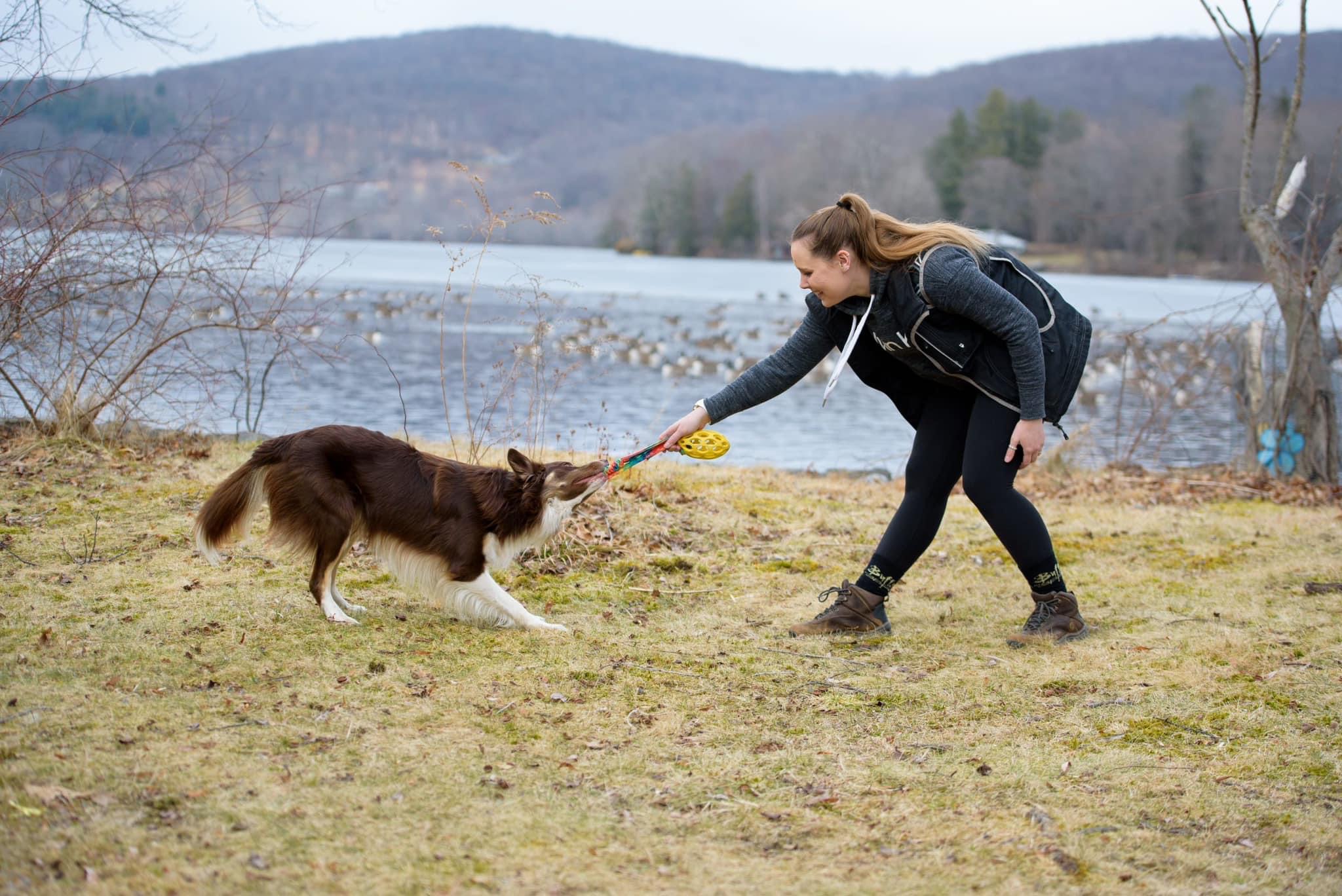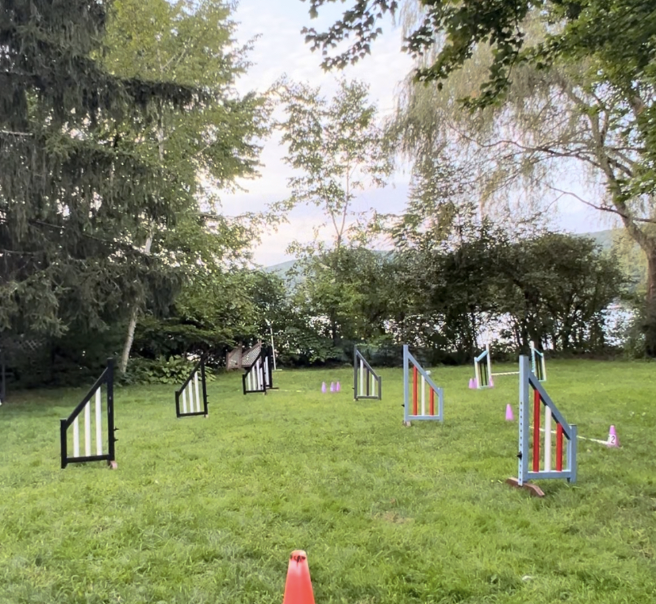Course Details
Want to run an agility course clean and with ease? To feel like you can get everywhere you want on course? To be able to trust your dog to go where you send them every time? Connection is without a doubt one of the most important parts of accomplishing all of these. Lack of connection is often the reason behind off-course obstacles, misunderstood cues, refusals, knocked bars, and just general disconnection on course. On the flip side, a strong connection is the cause of proper timing, ability to send and go, getting ahead of your dog or successfully cueing a turn from behind, committing a dog to an obstacle/line knowing when that dog is committed to the obstacle/line, running proper lines, even saving a possible mistake on course, etc.
But what does connection really mean??
Connect with your dog! You dropped connection! We hear these all the time when running agility courses. From a handler’s perspective, connection is the art of looking in the right place at the right time while handling a dog through a course.
BUT this class will not only focus on just the handler’s perspective of connection. We will also be focusing on the dog’s perspective, which is often referred to as commitment aka the dog focusing on and carrying through performing an obstacle.
Throughout this class, we will discuss the art of being able to stay connected while on course from many different angles. We will be diving into the following specific topics via focusing on mix of drills, exercises, and games:
- Improving your peripheral vision, so being able to see both where your dog is and where you are at the same time (at all times!).
- Looking in the right place at the right time
- Opposing motion
- Send and gos
- Pushing commitment
- Running correct lines while not looking where you’re going
- And more!
The class will then culminate in running short sequences that challenge your ability to hold you and your dog’s newly strengthened connection and your commitment.
Teaching Approach:
Lectures will be a combination of written lecture and video example.
Feedback will be a combination of written discussion and videod feedback. For the videod feedback, I will do screen recordings of your videos, slowing everything down and talking through your video.
 Instructor: Bronagh Daly
Instructor: Bronagh DalyBronagh Daly is a Certified Control Unleashed Instructor, Certified Family Dog Mediator, Certified One Mind Dogs Instructor, and a graduate of the Aggression in Dogs Master Course. She does not believe in one-size-fits all...(Click here for full bio and to view her upcoming classes)



